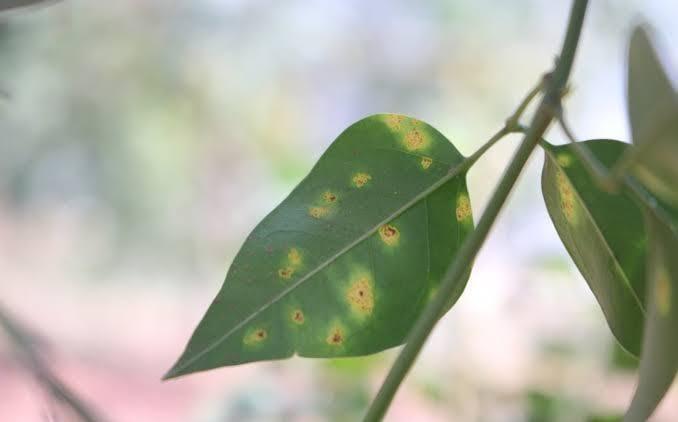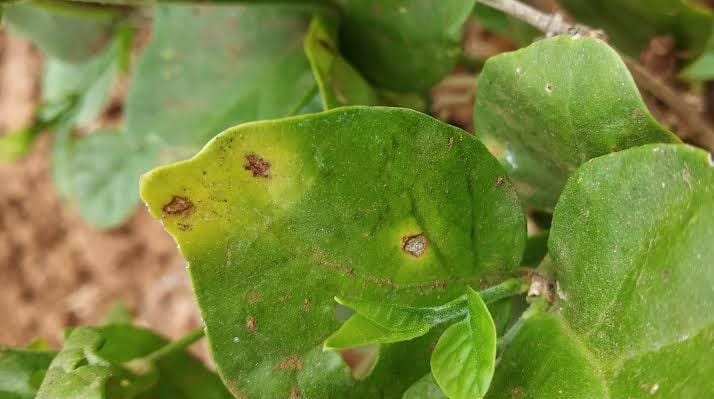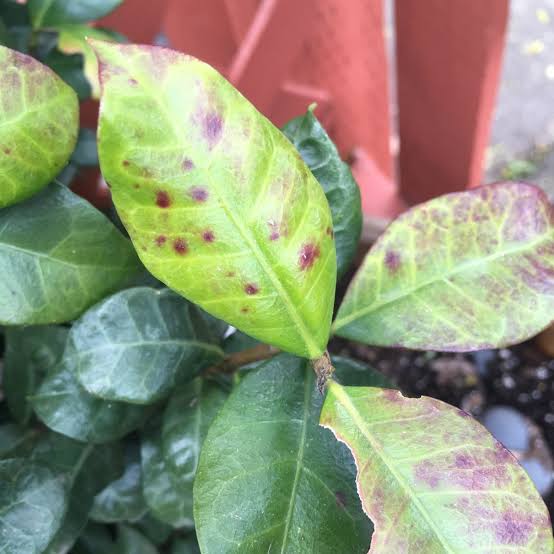Chameli Plant
Chameli, also known as Jasmine, is a fragrant flowering vine. Plant in well-draining soil with full sun exposure. Water consistently, especially during dry periods. Provide support for climbing varieties. Pruning helps control size and encourages more blooms.
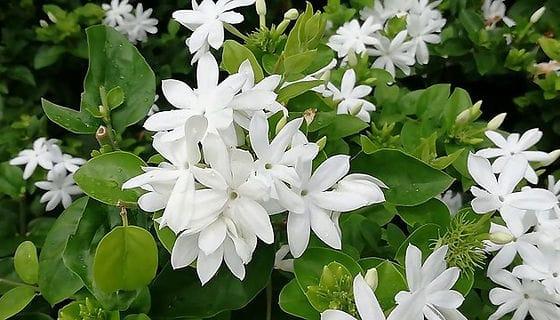
Habit
Climber
Height
1-4 m
Growth
Rapid
Soil
Well-drained loamy soil
Shade
Full Sun
Moisture
Moist
Edible
No
Medicinal
Yes
Origin
India, Persia
Climatic Condition
Tropical, Subtropical
Temperature (°)
20-30°C
Humidity (%)
50-80%
Potting media
Peat, compost mix
Fertilizers
NPK 10:10:10, slow-release
Watering
Moderate watering
Plant Weight
100-500 g
Flowering Time
Summer to Fall
Soil Ph level
6.0 - 7.5
Water Ph level
6.0 - 7.5
Soil EC
1-2 dS/m
Yield Per Plant
Ornamental, aromatic
NPK ratio
10:10:10
life Span
10-15 years
Health Benefits
Used in perfumes, stress relief, tea
Suggested Grow Media or Potting Mix ?
50% loamy soil, 30% compost, 20% sand
Suggested Fertigation/Fertilizers
Fertilize every 6 weeks with a balanced, slow-release fertilizer.
Common Diseases and Remedies
leaf blight
Reddish brown , circular spots are produced on upper surface of the leaves.
Spray Baking soda solutions [a tablespoon of baking soda, 2 and half tablespoon of vegetable oil, a teaspoon of liquid soap , to one gallon of water] , Neem oil.
HEALTH BENEFITS
· Used in aromatherapy to relieve stress and anxiety.
· Chameli tea aids digestion and boosts immunity.
· The oil has antibacterial and antifungal properties.
What Is An Chameli Tree?
Chameli, also called jasmine in English, refers to a group of flowering plants in the genus Jasmine. These plants are known for their fragrant, star-shaped flowers and are cultivated for ornamental, medicinal, and culinary purposes. Chameli plants are characterized by vine or shrubby growth and are native to tropical and subtropical regions around the world.
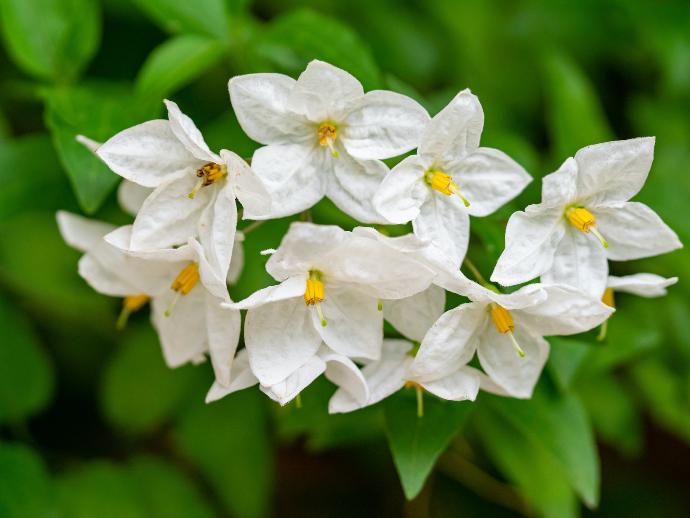
What Are The Different Types Of Chameli Plants?
1. Common Jasmine (Jasminum officinale)
This is the best known type of jasmine and is prized for its strongly scented white flowers. A climbing plant that can reach 3 m in height and is often used in perfumery, tea, and traditional medicine.
2. Arabian Jasmine (Jasminum sambac)
Also known as "mole" in some regions, Arabian jasmine is a popular species prized for its strongly scented white flowers. Native to Southeast Asia, it is often used in religious ceremonies, wreaths, and perfumes.
3. Star Jasmine (Trachelospermum jasminoides)
Although not a true jasmine (genus Jasminum), star jasmine is often called so because of its similar scent and appearance. This is a woody vine or shrub with glossy dark green leaves that produce clusters of white star-shaped flowers.
4. Winter Jasmine (Jasminum nudiflorum)
This species is known for its early winter flowering, producing bright yellow flowers on bare stems before the leaves emerge. A hardy plant that can withstand cold temperatures, it is often used as a groundcover or in cascading planters.
5. Confederate Jasmine (Trachelospermum asiaticum)
Also known as Asian Jasmine, this species is prized for its glossy dark green leaves and fragrant white flowers. A vigorous vine often used to cover fences, walls, and trellises.

How to care for Chameli Plants ?
1. Location
Choose a sheltered, sunny, moist location with well-drained soil and a trellis or structure for the plant to climb. Water thoroughly once a week during the growing season to keep the soil evenly moist.
2. Sun shine
Jasmine plants generally prefer bright indirect sunlight. It grows in a location that receives plenty of natural light, but does not receive direct sunlight, especially during the hottest parts of the day. Lack of sunlight may cause the plant to grow long and cause poor flowering.
3. Soil
Jasmine prefers soil that is well-drained and does not retain excess water. If the soil becomes waterlogged or flooded, root rot and other problems can occur. Choose a potting mix that drains well, or amend your garden soil with organic materials like compost and perlite to improve drainage. Jasmine plants prefer slightly acidic to neutral soil with a pH of 6.0 to 7.0.
4. Hydration
Jasmine plants prefer constantly moist soil, but are sensitive to overwatering. Water thoroughly when the top of the soil feels dry, usually once or twice a week during the growing season. Adjust the frequency based on factors such as:temperature, humidity, soil drainage.
5. Nutrition
Jasmine plants can be fertilized regularly throughout the growing season to replenish soil nutrients and support vigorous growth and flowering. Mix organic matter, such as compost or old manure, into the soil before planting jasmine plants or as a top dressing around established plants. Consider using fertilizers with micronutrients or apply them separately as needed. Jasmines benefit from occasional foliar application of liquid fertilizer, especially during periods of rapid growth and flowering. Dilute a water-soluble fertilizer to half the concentration and spray it on the leaves to ensure good coverage.

5. Issues
Jasmine plants may be susceptible to pests such as aphids, mealybugs, spider mites, and scale insects. Inspect your plants regularly for signs of pests, such as: B. Yellowing leaves, distorted growth, or sticky residue. Jasmine plants can be susceptible to fungal diseases such as powdery mildew, spot and root rot, especially in damp conditions or overwatering.
What are the Benefits of Chameli plant ?
Fragrant Flowers: One of the most notable benefits of the jasmine plant is its fragrant flowers. Jasmine flowers emit a sweet, intoxicating scent that fills the air with a pleasant scent. Ornamental Beauty: Jasmine plants are prized for their ornamental beauty, with clusters of white, pink or yellow flowers that add charm and elegance to gardens and indoor spaces. The lush green foliage of jasmine also provides a beautiful backdrop for the delicate flowers.Purifying Indoor Air: Like other houseplants, jasmine plants improve indoor air quality by removing toxins and pollutants from the air through a process called phytoremediation.Medicinal Uses: Jasmine flowers and leaves are used in traditional medicine for various health benefits.

FAQs About Growing chameli
1. How often should I water my Jasmine plant?
Water Jasmine plants thoroughly when the top inch of soil feels dry to the touch, typically once or twice a week during the growing season. Adjust the frequency based on factors such as temperature, humidity, and soil drainage.
2.Does Jasmine need direct sunlight?
Jasmine plants prefer bright, indirect sunlight. They thrive in locations where they can receive ample natural light but are protected from direct sunlight, especially during the hottest part of the day.
3. How can I make my Jasmine plant bloom more?
To encourage blooming, provide Jasmine plants with adequate sunlight, regular watering, and balanced fertilization during the growing season. Avoid pruning Jasmine plants during the flowering season, as this can remove flower buds and reduce blooming
4. .Can I grow Jasmine indoors?
Yes, Jasmine plants can be grown indoors in containers as long as they receive bright, indirect sunlight and proper care. Choose a sunny window or provide supplemental lighting, and ensure that the plants are watered and fertilized regularly.
5. How do I propagate Jasmine plants?
asmine plants can be propagated from stem cuttings taken from healthy, mature plants. Select a 4-6 inch cutting with several nodes, remove the lower leaves, and plant it in well-draining soil. Keep the soil moist and provide warmth and humidity to encourage rooting.
